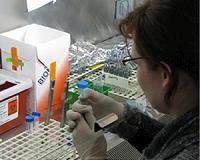 |
Paris, France (ESA) May 13, 2010 Space Shuttle Atlantis, ready for liftoff on Friday, will deliver important hardware from Europe to the International Space Station: spare portions of the European Robotic Arm and the first Russian payloads to use the arm. The European Robotic Arm (ERA) is the second 'intelligent' robot arm for the International Space Station (ISS). The first, used extensively for ISS assembly for almost 10 years, is Canadarm-2 - an iconic part of the ISS photos. The second arm, for launch in 2012, will be based on Russia's Multipurpose Laboratory Module (MLM), from where it can 'walk' to other locations. "Already now more than a third of the pressurised Station elements are built and designed in Europe and European knowhow is keeping Station in operation," says Simonetta Di Pippo, ESA's Director of Human Spaceflight. "Launching the ERA spare arm is an important step in keeping the ability for demanding robotic operations in case of technical failures - these may happen during the prolonged life of the ISS."
A new ERA in ISS robotics The Shuttle's main cargo is Russia's Mini Research Module 1 (MRM-1), with ERA's spare mid-section attached. Hopefully, it will never be needed. Atlantis is also carrying the MLM airlock, a portable work platform and an MLM radiator. ERA's other spare parts can be delivered later on smaller, unmanned craft, if needed, but this long and bulky composite of two limbs and elbow joint needs the Shuttle's help.
A walking arm ERA consists of two 'end-effectors' - dexterous hands, attaching the arm to the Station and routing power and command links - two wrists, two limbs and an elbow joint, together with electronics and cameras. Both ends can act as either a hand or the base. Longer than 11 m, ERA can walk around the ISS under its own control, hand-over-hand between base points. Astronauts can control it from inside or outside the Station.
European hi-tech "The fact that the Russian space agency launches on this flight with MRM-1 several pieces of hardware designed for operation by ERA makes this launch a precursor for the operational phase of ERA." ERA was developed by a European consortium led by Dutch Space, with subcontractors in eight countries. "The launch of the spare hardware highlights the enormous effort put into the development of the European Robotic Arm by all parties involved over the past years," says Bart Reijnen, CEO of Dutch Space. "Looking forward, it is an important milestone towards the peak of the ERA project, the launch of the flight model."
Share This Article With Planet Earth
Related Links ERA - Dutch Space Station at NASA Station and More at Roscosmos S.P. Korolev RSC Energia Watch NASA TV via Space.TV Space Station News at Space-Travel.Com
 Researchers To Send Bacteria Into Orbit Aboard Atlantis
Researchers To Send Bacteria Into Orbit Aboard AtlantisTroy NY (SPX) May 11, 2010 A team of researchers from Rensselaer Polytechnic Institute will send an army of microorganisms into space this week, to investigate new ways of preventing the formation and spread of biofilms, or clusters of bacteria, that could pose a threat to the health of astronauts. The Micro-2 experiment, led by Cynthia Collins, assistant professor in the Department of Chemical and Biological Engine ... read more |
|
| The content herein, unless otherwise known to be public domain, are Copyright 1995-2010 - SpaceDaily. AFP and UPI Wire Stories are copyright Agence France-Presse and United Press International. ESA Portal Reports are copyright European Space Agency. All NASA sourced material is public domain. Additional copyrights may apply in whole or part to other bona fide parties. Advertising does not imply endorsement,agreement or approval of any opinions, statements or information provided by SpaceDaily on any Web page published or hosted by SpaceDaily. Privacy Statement |